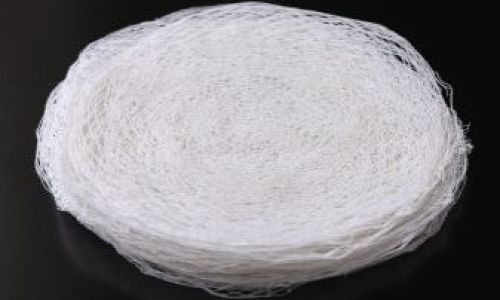Introduction
Cookies are a beloved treat enjoyed worldwide, cherished for their sweet flavors, crunchy or chewy textures, and ability to satisfy cravings. Whether homemade or store-bought, one question frequently arises: How long do cookies last before they spoil or lose their quality? The answer varies widely depending on ingredients, packaging, and storage methods. This article explores the science behind cookie shelf life, offers practical advice for extending freshness, and debunks common myths about expiration dates. By understanding the nuances of cookie preservation, you can ensure every bite remains as delightful as the first.
The Basics of Cookie Shelf Life
The lifespan of cookies hinges on their composition and production process. Homemade cookies, typically made with basic ingredients like flour, sugar, butter, and eggs, generally last 2–3 weeks when stored correctly. In contrast, commercially produced cookies often contain preservatives such as calcium propionate or sodium benzoate, which inhibit microbial growth and extend shelf life to 3–6 months. However, even these additives have limits, and environmental factors play a critical role.
Types of Cookies and Their Longevity
Not all cookies are created equal. Soft, chewy varieties like chocolate chip or oatmeal raisin cookies have higher moisture content, making them prone to staleness within 7–10 days if not sealed properly. Crunchy cookies, such as ginger snaps or biscotti, dehydrate during baking, creating a dry texture that resists spoilage for up to 4 weeks. Specialty cookies, such as those with cream fillings or fresh fruit, have the shortest shelf life—often just 3–5 days—due to perishable components.
Key Factors Influencing Cookie Freshness
- Ingredients: Fat and sugar act as natural preservatives. Cookies with more butter or shortening tend to last longer than those made with oil, which can turn rancid. Sugar absorbs moisture, preventing microbial growth.
- Moisture Content: High humidity accelerates staleness by softening crisp cookies and creating breeding grounds for mold.
- Storage Conditions: Airtight containers, cool temperatures, and darkness are ideal. Exposure to light and oxygen triggers oxidation, causing fats to spoil and flavors to degrade.
- Packaging: Commercial cookies often use modified atmosphere packaging (MAP), which replaces oxygen with nitrogen to delay rancidity.
The Role of Packaging in Preservation
Packaging is a cookie’s first line of defense. Factory-sealed bags or tins create a barrier against moisture, pests, and air. Once opened, transferring cookies to an airtight container—such as a glass jar with a rubber seal—can double their lifespan. For long-term storage, freezing is effective: cookies can last 6–12 months in freezer-safe bags, though texture may slightly deteriorate upon thawing.

Signs of Spoilage: When to Toss Cookies
- Staleness: A dry, crumbly texture indicates moisture loss, not spoilage. While safe to eat, stale cookies lack appeal.
- Rancidity: Fats oxidize over time, producing a bitter, metallic taste. This is common in cookies made with vegetable oils or nuts.
- Mold: Fuzzy green or white spots signal microbial growth, usually from improper storage.
- Off Odors: A sour or chemical smell suggests bacterial contamination or chemical breakdown.
Extending Shelf Life: Proven Strategies
-
Optimal Storage:

- Room Temperature: Keep cookies in a cool, dry pantry. Avoid refrigerators, which introduce humidity.
- Airtight Containers: Use containers with tight-fitting lids to prevent air exchange.
- Separate Flavors: Store strongly scented cookies (e.g., gingerbread) away from delicate ones (e.g., vanilla) to prevent flavor migration.
-
Freezing Techniques:
- Pre-Freezing: Arrange cookies on a baking sheet and freeze until solid before transferring to bags. This prevents clumping.
- Thawing: Let cookies defrost at room temperature; microwaving may cause sogginess.
-
Rejuvenation Hacks:
- Stale Cookies: Revive crispness by baking at 300°F (150°C) for 3–5 minutes.
- Soft Cookies: Add a slice of bread to the container; the cookies will absorb moisture from the bread.
Regulatory Guidelines and Labeling
In the U.S., the FDA requires manufacturers to list “best by” dates, which indicate peak quality, not safety. These dates are conservative estimates, and cookies may remain edible weeks past if unopened. The European Union mandates similar labeling, though some countries use “use by” dates for perishable items. Always inspect cookies for spoilage signs, regardless of the date.

Consumer Misconceptions Debunked
- “Preservatives Make Cookies Immortal”: While additives delay spoilage, they don’t stop it. Heat, light, and time still degrade quality.
- “Refrigeration Extends Life”: Fridges cause condensation, accelerating staleness. Freezing is better for long-term storage.
- “Organic Cookies Spoil Faster”: Organic ingredients lack synthetic preservatives, but proper storage can mitigate this.
The Science Behind Staleness
Staleness occurs when starch molecules in flour retrograde—a process where moisture evaporates, and sugars recrystallize. This makes cookies hard but not unsafe. Rancidity, however, involves fat molecules breaking down into free fatty acids, which can cause gastrointestinal distress if consumed in large quantities.
Creative Ways to Use Expired Cookies
Before discarding stale cookies, repurpose them:

- Crush into crumbs for pie crusts or cheesecake bases.
- Soak in milk or coffee to soften for desserts like tiramisu.
- Blend into cookie butter by processing with sweetener and oil.
Conclusion
The shelf life of cookies depends on a delicate balance of ingredients, environment, and handling. While guidelines provide a starting point, trust your senses: if cookies smell off, taste bitter, or show mold, discard them. By mastering storage techniques and understanding the enemies of freshness—air, moisture, and heat—you can enjoy cookies at their best for longer. Whether dunking a crisp biscotti in espresso or savoring a gooey chocolate chip cookie, the key lies in preservation and mindful consumption.





0 comments